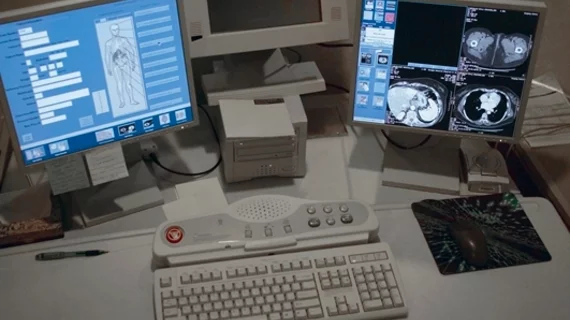SIIM 2022: 5 ways voice-triggered macros can improve radiologist workflow
This week at the Society for Imaging Informatics in Medicine’s annual conference, presenters made the case for the utility of voice-triggered macros in the fight against radiologist burnout.
Speakers Shawn Lyo, MD, of SUNY Downstate Health Sciences University and Dan Cohen-Addad, MD, from the University of Pennsylvania shared how the use of voice-triggered macros could optimize radiologists’ workflows, saving them time and increasing their efficiency.
Voice-triggered macros are spoken voice commands that trigger a subsequent command in order to perform a specified task. Software that achieves this is easily implemented into workflows and can complete virtually innumerable tasks.
“You can essentially use them for anything you want—faster PACS functions, emails, playing music, etc.,” Cohen-Addad said.
Pertaining to the benefits of these macros for radiologists, Lyo cited the ever-growing mountain of work rads are faced with. As production expectations have increased, the time in which radiologists must keep up with them has remained the same, the speakers explained. Speaking of time constraints specifically, Lyo shared that just one voice macro usage can save 27 seconds and 24 mouse clicks/key presses; if there are 50 protocols in one shift, macro usage could save 22.5 minutes and 1,200 mouse clicks/key presses.
“This process reduces the whole ordeal to something that takes one click, one phrase and 13 seconds,” Lyo said. “This time really builds up.”
Below are a few of the key benefits of using voice-triggered macros presented during the discussion:
Patient data—blood work, medical history, radiology reports, etc.—can be easily retrieved.
Orders for scans and lab work can be placed quickly.
Image manipulations can be completed in PACS with preset formulas and commands, making obtaining certain calculations simpler.
Resources, such as BI-RADS, cardiac device policies, emails and directories can be quickly accessed with one voice command.
Rather than navigating multiple windows for separate applications—PACS, RIS, EMR, etc.—interconnectivity can be simulated with one phrase.
“When we free up our attention that is occupied by unnecessary actions, we have more reserves for medical image interpretation,” Lyo stated.
Of course, implementing this technology is not without its own unique challenges, the doctors explained, but when added to the arsenal of tools radiologists have at hand it could help to streamline some of their workflow, reducing at least one aspect of physician burnout.
For more on SIIM 2022, click here.
Related radiologist workflow content:
VIDEO: What to look for in radiology workflow orchestration software
How to prevent cherry picking on radiology worklists
AI assists radiologists in detecting fractures, improves workflow

